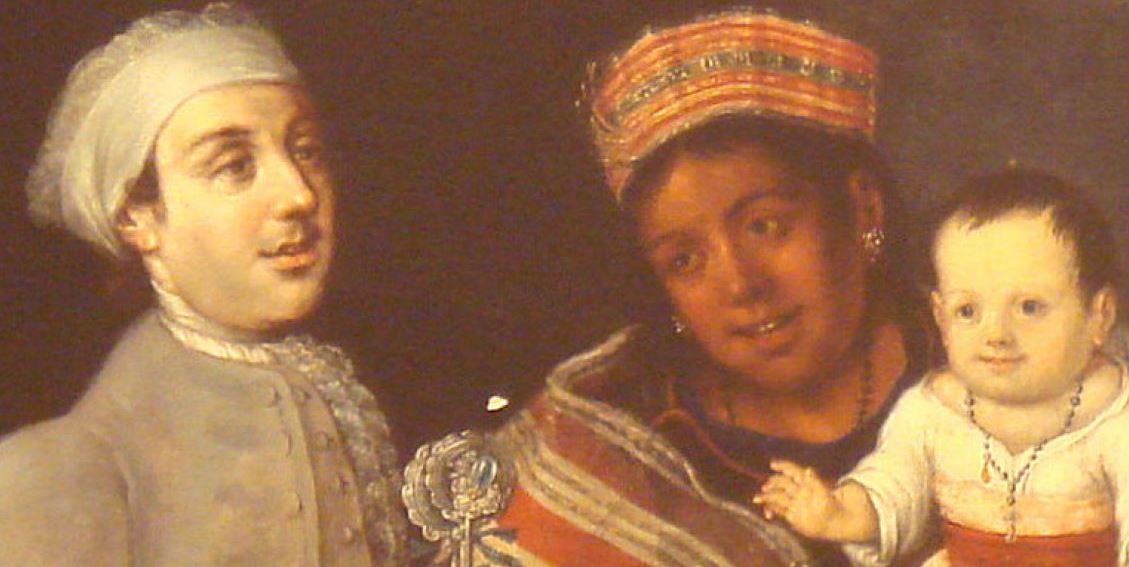Scientists at Oxford University have compared the genes of modern North and South Americans with European and African populations, and found the genetic fingerprints of the slave trade and colonization that shaped the migrations to the New World hundreds of years ago.
The research team, which also included scientists from the Universita’ del Sacro Cuore of Rome and University College London (UCL), gathered and analyzed data on more than 4,000 previously collected DNA samples from sixty-four different populations in the Americas, Africa and Europe.
Their findings have been published in the academic journal Nature Communications (citation below).

Approximate geographic sampling location of donor and recipient populations analyzed. (Image: Nature Communications)
Given that the flow of people over the last few hundred years was from Europe and Africa to the Americas, the researchers compared the ‘donor’ Old World populations with ‘recipient’ American populations to find out where the ancestors of modern North and South Americans came from.
Americans’ genetic profile ‘complex’
Study leader, Professor Cristian Capelli, from the Department of Zoology at Oxford University, said:
“We found that the genetic profile of Americans is much more complex than previously thought.”
They analyzed DNA samples gathered from people in Puerto Rico, Mexico, Ecuador, the Dominican Republic, Columbia, Barbados, and African-Americans in the United States.
The team used a technique known as haplotype-based analysis to compare the pattern of genes in these ‘recipient’ and ‘donor’ populations in areas where migrants to the New World came from.
First author, Dr. Francesco Montinaro, also from Oxford University’s Department of Zoology, said:
“We firstly grouped subsets of people in Africa and Europe who were genetically similar and used this fine scale resolution to find which combinations of these clusters resulted in the sort of mixtures that we now see in people across the Americas.”
Huge impact of slave trade
Co-author, Dr. Garrett Hellenthal from the UCL Genetics Institute, said:
“We can see the huge genetic impact that the slave trade had on American populations and our data match historical records. The majority of African Americans have ancestry similar to the Yoruba people in West Africa, confirming that most African slaves came from this region.”
“In areas of the Americas historically under Spanish rule, populations also have ancestry related to what is now Senegal and Gambia. Records show that around a third of the slaves sent to Spanish America in the 17th Century came from this region, and we can see the genetic evidence of this in modern Americans really clearly.”

The genetic profile of Americans is much more complex than previously thought. (Image: Oxford University)
The study also discovered previously unknown migration. There is a clear genetic contribution from the Basques in Mexico’s modern-day Maya, suggesting that people from the Basque Country were also involved in the colonization of the Americas. They either came with the Spanish conquistadores or in later migration waves, the authors said.
Professor Capelli said:
“The differences in European ancestry between the Caribbean islands and mainland American population that we found were also previously unknown. It is likely that these differences reflect different patterns of migration between the Caribbean and mainland America.”
“These results show just how powerful a genetic approach can be when it comes to uncovering hidden patterns of ancestry. We hope to use the same approach to look at other populations with diverse genetic contributions, such as Brazilians.”
Below are some highlighted data from the study:
Spain: most of the American Hispanic/Latino populations’ ancestors come from Spain, while the most common European genetic source of Barbadians and African-Americans comes from the United Kingdom.
Caribbean Islands: The people of the Dominican Republic and Puerto Rico are genetically similar to each other, but different from other mainland America populations. This likely reflects a different migration pattern between mainland America and the Caribbean islands.
The populations in the Caribbean countries, such as Barbados, had a greater genetic contribution from Africa compared to South Americans.
Yoruba people: the current-day American populations’ largest contributions of genes from Africa comes from the Yoruba people (southwestern Nigeria and southern Benin in West Africa).
Africa: the proportion of African ancestry ranged from virtually zero in the Maya people to 87% in current day Barbados.
Southern Italy: the contribution from Sicily and south Italy is significant among the people of Puerto Rico and Colombia, reflecting the migration waves in the late 19th and early 20th centuries.
France: French ancestry was found in one of the African-American groups, reflecting the historical French immigration in the colonial Southern US.
Among the ‘recipient’ populations, the proportion of genes from African versus European sources varied enormously from individual to individual.
Citation: “Unravelling the hidden ancestry of American admixed populations,” Francesco Montinaro, George B.J. Busby, Vincenzo L. Pascali, Simon Myers, Garrett Hellenthal & Cristian Capelli. Nature Communications. Published 24 March, 2015. DOI: 10.1038/ncomms7596.

